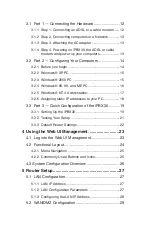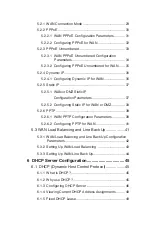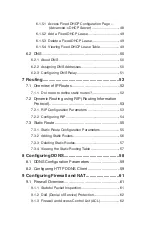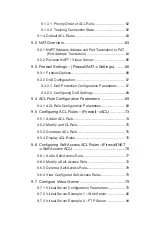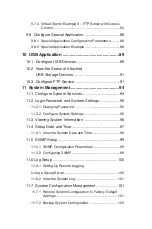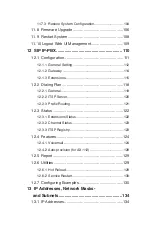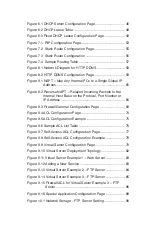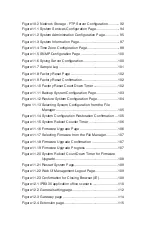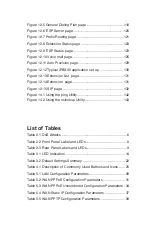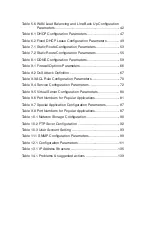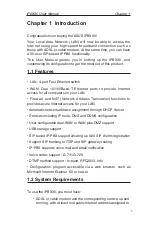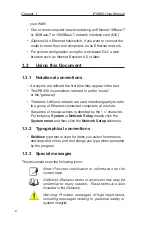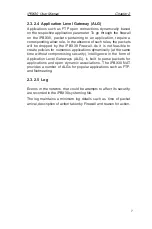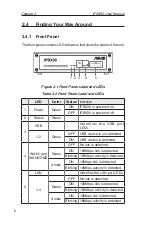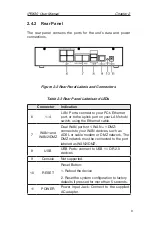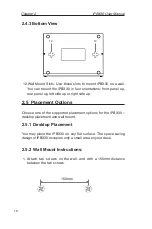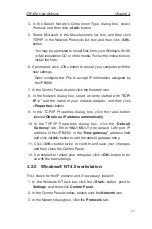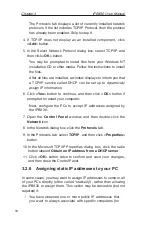
Chapter 2
iPBX30 User Manual
4
2.3 Software Features
2.3.1 NAT Features
iPBX30 provides Network Address Translation (NAT) to share
a single high-speed Internet connection and to save the cost of
multiple connections required for the hosts on the LAN segments
connected to it. This feature conceals network address and
prevents them from becoming public. It maps unregistered IP
address of hosts connected to the LAN with valid ones for Internet
access. iPBX30 also provides reverse NAT capability, which
enables users to host various services such as e-mail servers, web
servers, etc. The NAT rules drive the translation mechanism. The
following types of NAT are supported by iPBX30.
•
NAPT (Network Address and Port Translation)
Also called IP Masquerading or ENAT (Enhanced NAT). Maps
many internal hosts to only one globally valid IP address. The
mapping usually contains a pool of network ports to be used for
translation. Every packet is translated with the globally valid IP
address; the port number is translated with a free pool from the
pool of network ports.
•
Reverse NAPT
Also called inbound mapping, port mapping,or virtual server.
Any packet coming to the router can be relayed to an internal
host based on the protocol, port number and/or IP Address
specified in the rule. This is useful when multiple services are
hosted on different internal hosts.
Summary of Contents for iPBX30
Page 1: ...iPBX30 User Manual E2883 December 2006 ...
Page 151: ......

